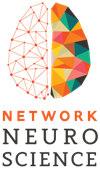Similarity in evoked responses does not imply similarity in macroscopic network states
IF 3.1
3区 医学
Q2 NEUROSCIENCES
引用次数: 0
Abstract
It is commonplace in neuroscience to assume that if two tasks activate the same brain areas in the same way, then they are recruiting the same underlying networks. Yet computational theory has shown that the same pattern of activity can emerge from many different underlying network representations. Here we evaluated whether similarity in activation necessarily implies similarity in network architecture by comparing region-wise activation patterns and functional correlation profiles from a large sample of healthy subjects (N=242) that performed two executive control tasks known to recruit nearly identical brain areas, the color-word Stroop task and the Multi-Source Interference Task (MSIT). Using a measure of instantaneous functional correlations, based on edge time series, we estimated the task-related networks that differed between incongruent and congruent conditions. We found that the two tasks were much more different in their network profiles than in their evoked activity patterns at different analytical levels, as well as for a wide range of methodological pipelines. Our results reject the notion that having the same activation patterns means two tasks engage the same underlying representations, suggesting that task representations should be independently evaluated at both node and edge (connectivity) levels.诱发反应的相似性并不意味着宏观网络状态的相似性
神经科学界通常认为,如果两项任务以相同的方式激活了相同的脑区,那么它们招募的是相同的底层网络。然而,计算理论表明,相同的活动模式可能来自许多不同的底层网络表征。在这里,我们通过比较大样本健康受试者(N=242)在执行两项已知会招募几乎相同脑区的执行控制任务(颜色词 Stroop 任务和多源干扰任务 (MSIT))时的区域激活模式和功能相关曲线,来评估激活的相似性是否必然意味着网络结构的相似性。利用基于边缘时间序列的瞬时功能相关性测量,我们估算出了在不一致和一致条件下存在差异的任务相关网络。我们发现,在不同的分析水平和各种方法管道下,这两种任务在网络概况上的差异远远大于其诱发活动模式的差异。我们的研究结果否定了激活模式相同意味着两个任务使用相同的基本表征的观点,这表明任务表征应在节点和边缘(连通性)层面进行独立评估。
本文章由计算机程序翻译,如有差异,请以英文原文为准。
求助全文
约1分钟内获得全文
求助全文

 求助内容:
求助内容: 应助结果提醒方式:
应助结果提醒方式:


